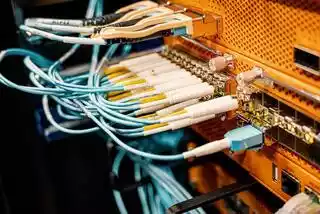What Is Latency in Networking?

The time it takes for data to travel from its source to its destination is what we call Latency.
In networking, latency refers to the delay or lag that exist when a device sends a request or data packet and when the device receiving the request or packet responds.
Latency is an important factor in networking because it affects the performance of network-based applications.
Imagine you’re sending a message to a friend who lives far away. You send the message, and it takes some time to reach your friend’s phone.
Once your friend receives the message, they read it and send a reply back to you.
That reply also takes some time to reach you. The time it takes for your message to reach your friend’s phone, and for their reply to reach your phone, is what we call “latency” in networking.
It is typically measured in milliseconds (ms). Low latency means less delay, while high latency means more delay.
Factors That Affects Latency
Here are some factors that affect latency
- Network or traffic congestion
- Distance between devices (the sender and the receiver)
- The quality and the performance of network hardware and software
- The type of network protocol being used, etc.
1/ Network or traffic congestion
Network congestion is one of the causes of latency or delay in data transmission between devices. It happens when there is too much traffic on the network. It’s like when too many cars try to drive on a road at the same time, causing a traffic jam.
2/ Distance between devices
Another factor that affects how fast data can be sent and received is the distance between the devices that are communicating. If they are too far apart, it can take longer for the data to travel between them.
3/ The quality and the performance of network hardware and software
The quality and performance of the network hardware and software also plays a role in how fast data can be transmitted.
This includes stuffs like the cables, routers, switches, and other devices that make up the network. If these components are not working properly, it can slow down the network.
4/ The type of network protocol being used
The type of network protocol being used can also affect how fast data can be transmitted.
A network protocol is like a set of rules that computers use to communicate with each other.
Some protocols are faster than others, so choosing the right one can help to improve network performance.
For example, in real-time communication like video game streaming, UDP is used while in non-real-time communication, TCP is used.
Read on: 13 Differences Between Transmission Control Protocol (TCP) and User Datagram Protocol (UDP)
Read on: What Is TCP/IP and How It Is Different From OSI Model
Low latency (or low delay) is important for real-time applications such as online gaming, video conferencing, and financial trading, where even small delays can have significant consequences.
Ways to Reduce Latency in Networking
There are several ways to reduce latency in networking, which in turn will increase the quality and performance at which data is transferred.
- Latency is often caused by network congestion, which occurs when there is too much traffic on the network.
To minimize network congestion, you can limit the number of devices connected to your network or use Quality of Service (QoS) tools to prioritize certain types of traffic. - By using content delivery network (CDN). CDNs are networks of servers that are distributed across different geographic locations.
By using a CDN, you can reduce latency by serving content from a server that is closest to the user. - Another way to reduce latency is to ensure that your network hardware is up to date and configured correctly.
This can include upgrading your router or switches, using high-speed Ethernet cables, and configuring your network settings to minimize interference and congestion. - By making use of optimize software and applications. Because, some applications and software may be designed in a way that increases latency so optimizing the software or using a different application, you can reduce latency.
- If you are running a web-based application or website, you can choose a data center that is closer to your users.
This can reduce the distance data needs to travel, thereby reducing latency. - To reduce latency, you can upgrade your internet connection to a faster speed or a better quality service provider.




